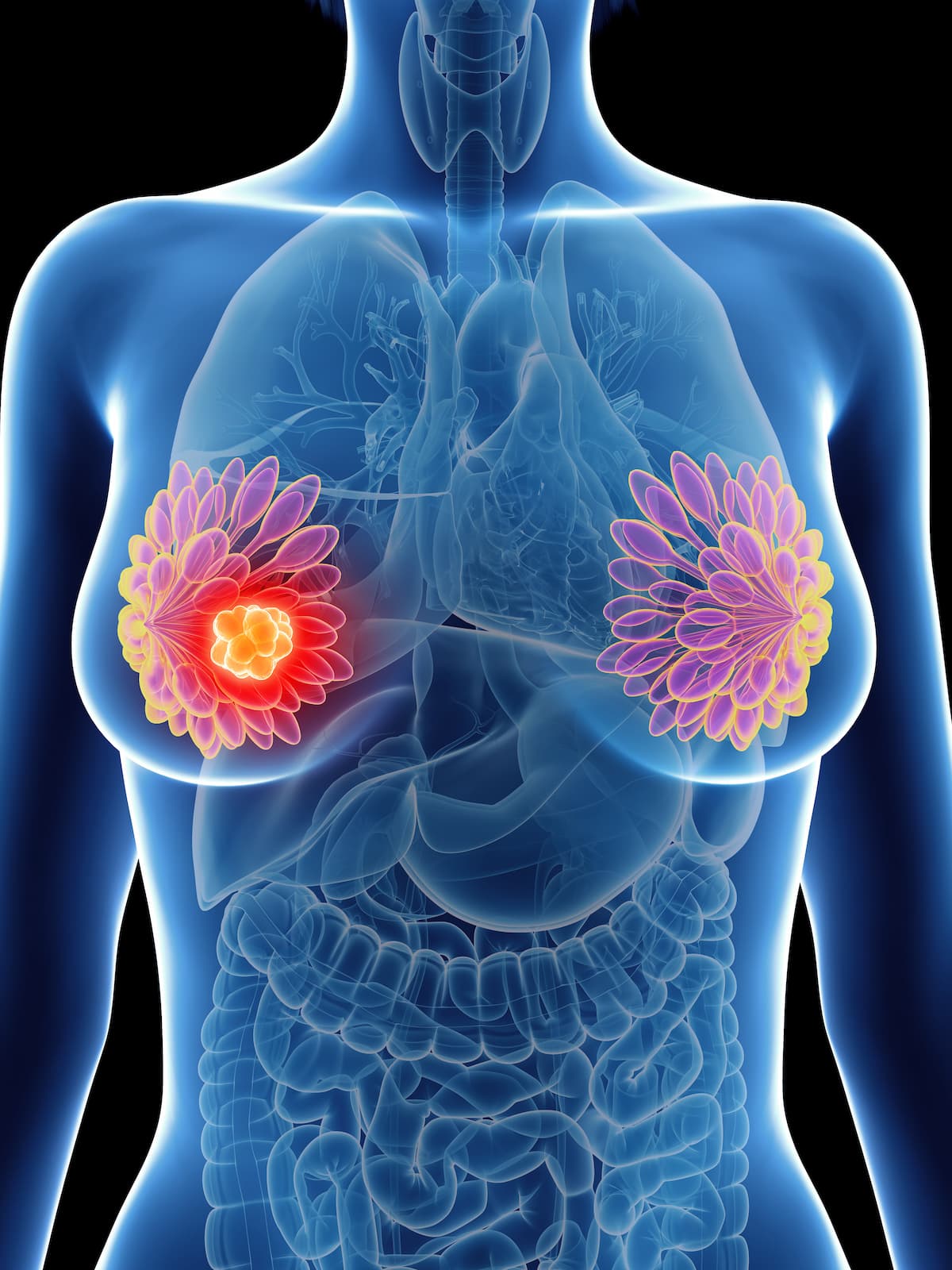HER3-DXd Yields Positive Efficacy/Safety Profile in Breast Cancer
Treatment with patritumab deruxtecan appears to yield improved responses in patients who have been heavily pretreated for metastatic breast cancer.
"Clinical activity of patritumab deruxtecan was observed across a broad range of HER3 membrane expression levels in patients with heavily pretreated ER-positive and triple-negative breast cancer. This is consistent with emerging data," according to an expert from Sarah Cannon Research Institute.

Treatment with patritumab deruxtecan (HER3-DXd) produced a tolerable safety profile and improved clinical activity among patients with heavily pretreated estrogen receptor (ER)–positive and triple-negative metastatic breast cancers, according to the results of a phase 2 study (NCT04699630) presented at the 2023 American Society of Clinical Oncology (ASCO) Annual Meeting.
The overall response rate (ORR) was 35.0% and the clinical benefit rate (CBR) was 43.3%. In heavily pretreated patients, the all-comer ORR was 35%, the overall CBR was 43%, and the duration of response (DOR) was at least 6 months in about half of those who responded.
The results presented at the meeting focused on cohort A, which included patients receiving 5.6 mg/kg of HER3-DXd intravenously on day 1 every 3 weeks. Trials for arms B and Z are still ongoing.
“Clinical activity of patritumab deruxtecan was observed across a broad range of HER3 membrane expression levels in patients with heavily pretreated ER-positive and triple-negative breast cancer. This is consistent with emerging data,” Erika P. Hamilton, MD, director of Breast Cancer and Gynecologic Cancer Research at Sarah Cannon Research Institute, said during the presentation.
Of the patients enrolled, 71.7% were between the ages of 18 and 65 and 98.3% were female. The median lines of prior therapy was 3 in the metastatic setting. Overall, 76.7% of the population was White. In 21.7% of patients, stage IV disease was present at diagnosis. It was noted that 3.3% of patients had a BRCA1 mutation and 1.7% had a BRCA2 mutation.
Of the 60 patients evaluated, 48 had baseline results available for ER and progesterone receptor status, and 78.3% had results available for HER3 status. High baseline ER was classified as more than 10% expression and occurred in 50.0% of patients, and low baseline ER was classified as 1% to 10% expression and occurred in 2.1%. Negative baseline ER occurred in in 47.9% of patients. Baseline progesterone receptor expression was evaluated as high in 45.8% of patients, low in 6.3%, and negative in 47.5%. Additionally, 39.6% of patients were baseline triple-negative.
When disease type was investigated, 32% had triple-negative breast cancer and 48% had hormone receptor-positive breast cancer. Additionally, 48% of patients had liver metastases and 32% had lung metastases.
The primary end points were ORR and 6-month progression-free survival (PFS). Secondary end points included safety and tolerability, DOR, PFS, and the clinical benefit rate.
In part A, patients must be 18 years or older with an ECOG performance score of 0 or 1, have locally advanced or metastatic breast cancer with 1 or more measurable lesions, HER2-negative, or hormone receptor-positive-or-negative. Additionally, patients must be willing to undergo pre-and-posit treatment biopsies, have no prior therapy with a HER3-targeting agent, and have no prior history of interstitial lung disease.
As of the data cutoff, 35.0% of patients remained on study treatment, and 65.0% had discontinued. The primary reasons for discontinuation were adverse effects (AEs; 13.1%), progressive disease (41.7%), death (3.3%), and physician or patient decision (6.7%). The duration of treatment while on the study was 5.9 months.
The median treatment duration was 5.2 months, and 21 patients continued with treatment at the data cutoff. In total, 43.3% of patients continued receiving HER3-DXd for 6 months or more. In the overall population, the investigator-assessed best overall response was a partial response in 35.0% of patients, stable disease in 43.3%, and progressive disease in 11.7%.
In patients who had HER3 expression of 75% or more and either ER-positive (n = 16) or triple-negative (n = 11) disease, the ORR was 37.5% (95% CI, 15.2%-64.6%) vs 18.2% (95% CI, 2.3%-51.8%), the CBR was 50.0% (95% CI, 24.7%-75.3%) vs 18.2% (95% CI, 2.3%-51.8%), and the proportion achieving a DOR of 6 months or more was 50.0% vs 50.0%, respectively.
In patients who had HER3 expression of 25% to 74% and either ER-positive (n = 5) or triple-negtive (n = 5) disease, the ORR was 60.0% (95% CI, 14.7%-94.7%) vs 20.0% (95% CI, 0.5%-71.6%), the CBR was 60.0% (95% CI, 14.7%-94.7%) vs 40.0% (95% CI, 5.3%-85.3%), and the proportion achieving a DOR of 6 months or more was 33.3% vs 0%, respectively.
In patients who had hormone-positive disease (n = 29) and TNBC, the ORR was 41.4% (95% CI, 23.5%-61.6%) vs 21.1% (95% CI, 6.1%-45.6%).
Treatment-related adverse effects (TRAEs) were observed in 93% of patients,, and 31.7% experienced TRAEs of grade 3 or higher. The most common grade 3 or higher TRAEs included fatigue (6.7%), diarrhea (5.0%), neutrophil count decrease (5.0%), and nausea (3.3%).
Treatment-emergent serious AEs occurred at various rates, with the most common being interstitial lung disease (1.7%), nausea/vomiting (1.7%), pneumonitis (1.7%), and thrombocytopenia (1.7%). Unrelated serious AEs included dyspnea (1.7%), pneumocystis jirovecii pneumonia (1.7%), and pneumothorax.
Reference
Hamilton EP, Dosunmu O, Shastry M, et al. A phase 2 study of HER3-DXd in patients (pts) with metastatic breast cancer (MBC). J Clin Oncol. 2023;41(suppl_16):1004. doi:10.1200/JCO.2023.41.16_suppl.1004